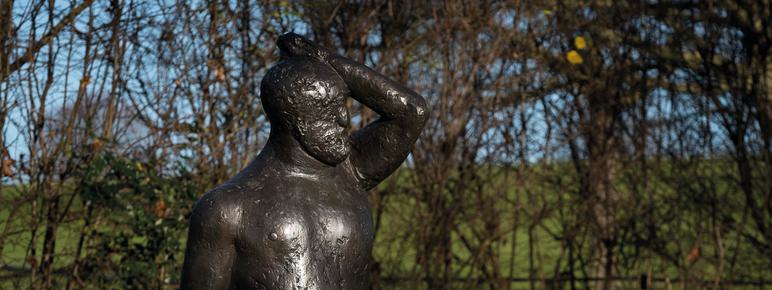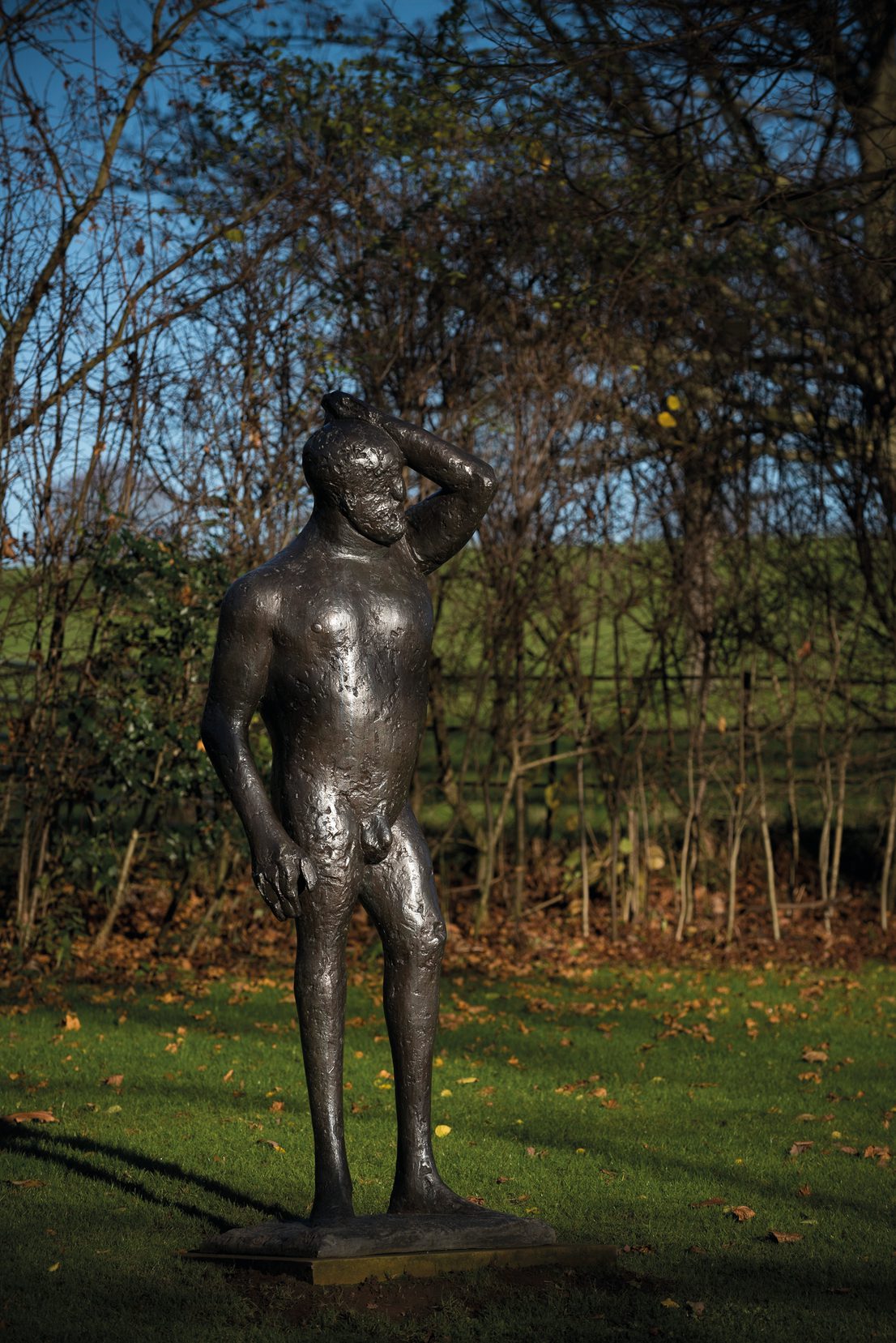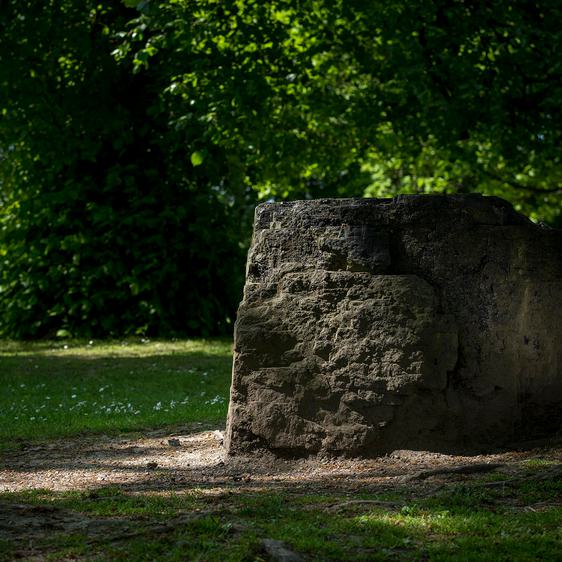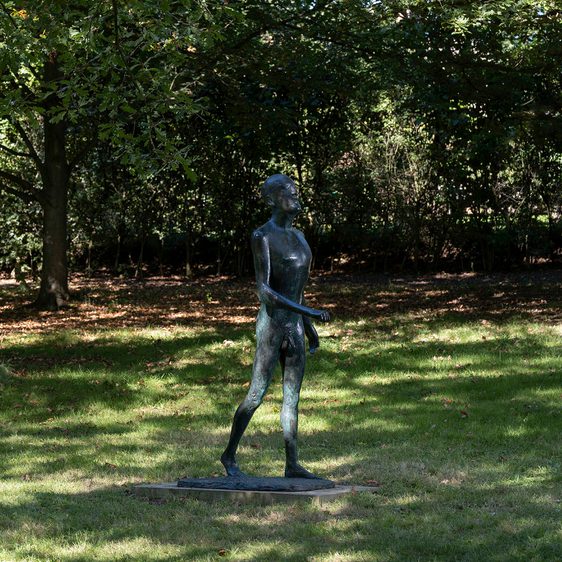
Elisabeth Frink: First Man
Art Outdoors /Elisabeth Frink: First Man
Elisabeth Frink was only nine years old when the WWII broke out, and much of her work was drawn from these earlier experiences. The horrors of the Second World War had a lasting impact on her work and life, and prompted her to become an active supporter of Amnesty International.
She was interested in human and animal forms, often combining both to share her view that mankind was not superior to the natural world. She used the male figure to explore the complexities of humanity, exposing both strength and vulnerability, as with First Man.
An exhibition of Frink’s sculpture, prints and plaster models – Natural Connection – is on display at The Weston until 23 February 2025.
Courtesy The Frink Estate and Yorkshire Sculpture Park.

You might also like
- Art Outdoors

Elisabeth Frink: Standing Man
- Art Outdoors

David Nash: Barnsley Lump
Barnsley Lump is a rough-cut block of local coal that connects to the geological and social history of the area. It is gradually disintegrating back into the earth, as Nash anticipated, describing it as a ‘going’ work. - Art Outdoors

Elisabeth Frink: Protomartyr
Protomartyr represents the first Christian martyr, Saint Stephen, who provided food and aid to poor members of his community in Jerusalem. - News

Yorkshire Sculpture Park announces 2024 programme celebrating diversity and personal discovery
10 January 2024